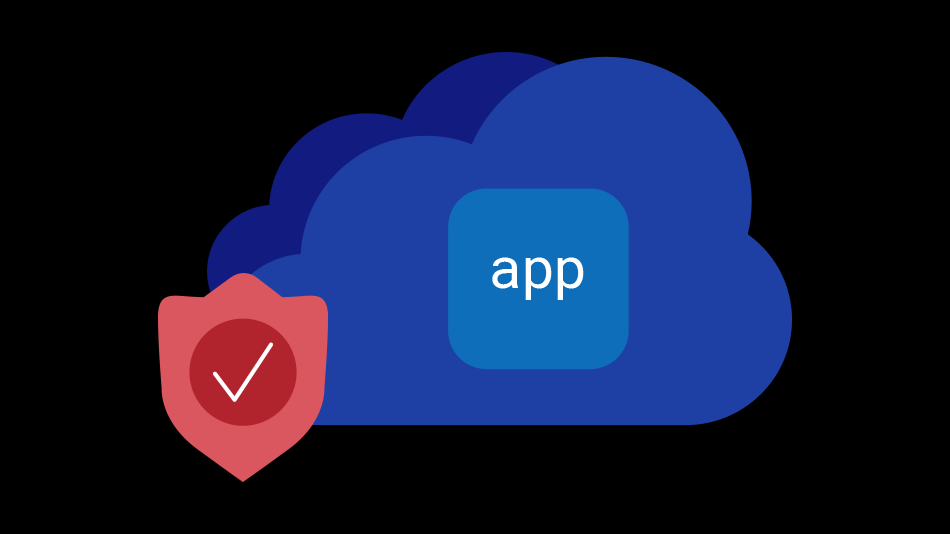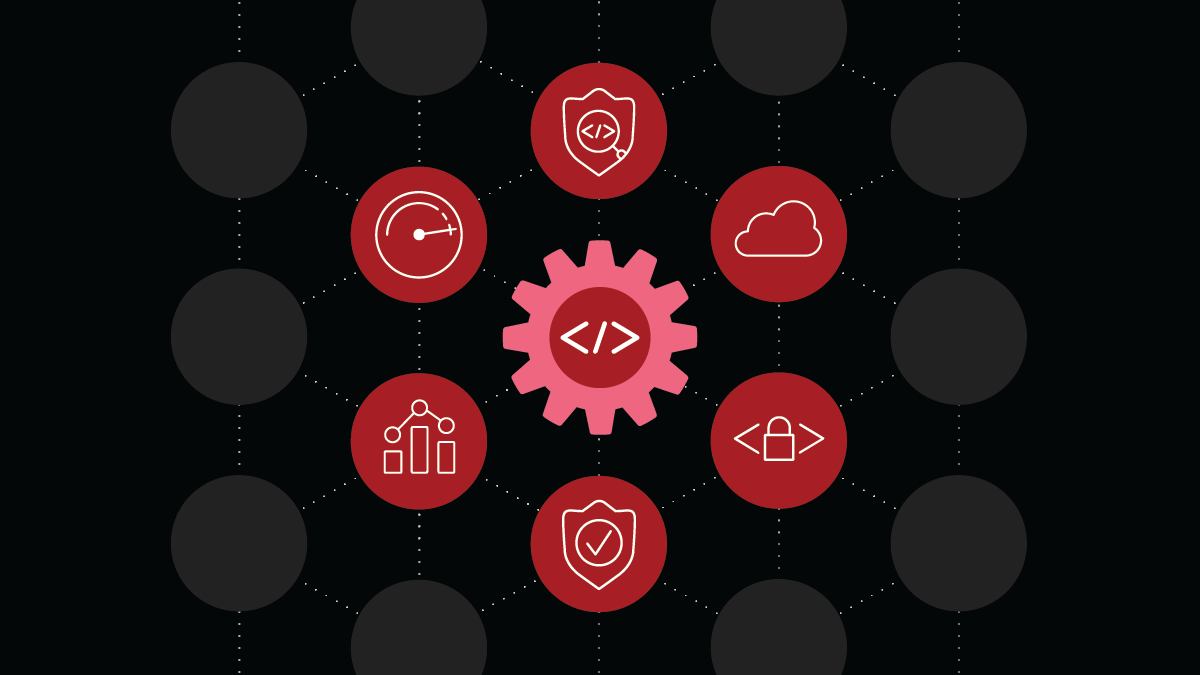Kaufratgeber für Web-App- und API-Schutz (WAAP)
End-to-End-Schutz für Apps und APIs überall
EINFÜHRUNG
Dezentrale Anwendungsarchitekturen auf Basis von APIs und KI sind der Motor einer neuen Generation digitaler Innovationen. Allerdings vergrößern diese dynamischen, verteilten Umgebungen auch die Angriffsfläche und erhöhen die Gefahr von Kompromittierungen, Ausfallzeiten und Missbrauch der Geschäftslogik. Erfahren Sie, wie effektive Sicherheitslösungen herkömmliche, moderne und KI-Apps vor kritischen Risiken schützen – vom Code über Tests bis hin zur Laufzeit – in Rechenzentren, Clouds und am Rand.
Wie sind wir zum Web-App- und API-Schutz (WAAP) gekommen?
Der Markt für Web-Anwendungssicherheit hat sich weiterentwickelt, um mit der neuen digitalen Wirtschaft Schritt zu halten. Während sich die Web Application Firewall (WAF) als wirksames Tool zur Minderung von Anwendungsschwachstellen erwiesen hat, hat die Verbreitung von APIs, Ökosystemen von Drittanbietern und Fortschritten bei der Raffinesse von Angreifern zu einer Konvergenz von WAF, API-Sicherheit, Bot-Management und DDoS-Minderung in WAAP-Lösungen geführt, um Apps und API-Endpunkte vor einer Vielzahl von Risiken zu schützen, darunter Zero-Day-Exploits, Angriffe auf die Geschäftslogik und automatisierte Bedrohungen, die zu einer Kontoübernahme (Account Takeover, ATO) führen können.
In einer hart umkämpften digitalen Landschaft setzen Unternehmen auf moderne Softwareentwicklung, um sich auf dem Markt einen Vorsprung zu verschaffen. Das Ergebnis sind schnelle Release-Zyklen zur Einführung neuer Funktionen und ein Mashup aus Integrationen, Front-End-Benutzeroberflächen und Back-End-APIs. Obwohl es keine Schwäche oder ein Mangel ist, einen Einkaufswagen oder ein Treueprogramm zu haben, sind die Endpunkte, die Handel und Kundenbindung ermöglichen, ein Hauptziel für Angreifer. Daher müssen alle Benutzerinteraktionen und Geschäftslogiken vor Softwareschwachstellen sowie inhärenten Schwachstellen geschützt werden, die zu einem Missbrauch der Anmeldung, der Kontoerstellung und des Hinzufügens zum Einkaufswagen führen können. Funktionen über Bots und böswillige Automatisierung.
APIs unterliegen ebenso wie herkömmliche Webanwendungen zahlreichen Risiken, darunter schwache Authentifizierungs-/Autorisierungskontrollen, Fehlkonfiguration und Server-Side Request Forgery (SSRF). Selbst Unternehmen mit guten API-Sicherheitspraktiken können dennoch gefährdet sein. Durch die Integration von Drittanbietern und KI-Ökosysteme, die sich über Hybrid- und Multicloud-Umgebungen erstrecken, wird die Bedrohungsfläche für Verteidiger dramatisch vergrößert. Rogue-API-Endpunkte, oft als Schatten- und Zombie-APIs bezeichnet, erfordern eine kontinuierliche Erkennung und einen automatisierten Schutz; idealerweise im Code, während des Tests und zur Laufzeit.
Heutzutage haben die Kunden eine noch nie dagewesene Auswahl und eine geringe Toleranz gegenüber schlechten Erfahrungen. Jeglicher Sicherheitsvorfall oder jede Reibung bei der Transaktion, einschließlich Leistungsverzögerungen und übermäßiger Authentifizierungsprobleme, kann zu Umsatzeinbußen und sogar zur Aufgabe der Marke führen.
Die neue digitale Wirtschaft erfordert daher eine neue Ära der Anwendungssicherheit, um Innovationen sicher freizusetzen, Risiken effektiv zu managen und die betriebliche Komplexität zu reduzieren.
Warum ist WAAP so dringend erforderlich?
Die flächendeckende Nutzung der Cloud und der damit einhergehende Aufstieg der generativen KI haben zu einer Vielzahl von Architekturen und gegenseitigen Abhängigkeiten zwischen Anwendungskomponenten geführt. Herkömmliche dreistufige Web-Stacks werden nachgerüstet oder sogar durch moderne Apps ersetzt, die dezentrale Architekturen auf Basis von Microservices nutzen, um die API-zu-API-Kommunikation zu erleichtern. Die Verwaltung mehrerer Sicherheits-Stacks und Cloud-nativer Toolkits in verschiedenen Umgebungen hat zu einer untragbaren Komplexität geführt und die Einsatzkräfte vor erhebliche Herausforderungen gestellt, da es unpraktisch ist, Bedrohungen, die mithilfe von KI schnell als Waffe eingesetzt werden, manuell zu beheben. Leicht zugängliche mobile Apps und Drittanbieterintegrationen über APIs beschleunigen jedoch die Markteinführungszeit und sind der Schlüssel zur Aufrechterhaltung des Wettbewerbsvorteils in einem Markt, der von ständiger digitaler Innovation geprägt ist.
Durch architektonische Dezentralisierung, agile Softwareentwicklung und komplexe Software-Lieferketten ist die Bedrohungsfläche größer geworden und es sind unbekannte Risiken hinzugekommen. Dies macht eine erneute Konzentration auf Shift-Left -Prinzipien wie Bedrohungsmodellierung, Code-Scanning und Penetrationstests sowie konzertierte Anstrengungen zur Aufrechterhaltung einer konsistenten Sicherheitslage in allen Umgebungen erforderlich. Neben der Eindämmung von Exploits und Fehlkonfigurationen muss InfoSec danach streben, Apps und APIs über den gesamten Software Development Lifecycle (SDLC) hinweg zu schützen und kritische Geschäftslogik vor Missbrauch zu bewahren.
Die Verbreitung von APIs und Tools ist so allgegenwärtig, dass wir einen Wendepunkt erreichen. Sicherheitsteams müssen sich der Telemetrie zuwenden, um umsetzbare Erkenntnisse zu gewinnen, und künstliche Intelligenz einsetzen, um Sicherheitsmaßnahmen automatisch anzupassen und so das Risiko angemessen zu mindern.
Kunden- und Umsatzwachstum
Unternehmen, die durchgehend sichere digitale Erlebnisse bieten, werden Kunden- und Umsatzwachstum erzielen.
Wettbewerbsvorteil
Cybersicherheitsvorfälle und Kundenkonflikte sind die größten Risiken für den digitalen Erfolg und den Wettbewerbsvorteil.
Erweiterte Bedrohungsfläche
Durch die Ausbreitung der Architektur und die gegenseitigen Abhängigkeiten ist die Angriffsfläche für raffinierte Angreifer dramatisch erweitert worden.
Was macht ein gutes WAAP aus?
Da es sehr komplex ist, Web-Apps und APIs vor einer ständigen Flut von Exploits und Missbrauch zu schützen, erfreuen sich cloudbasierte WAAP-Plattformen als Service immer größerer Beliebtheit. Diese Plattformen stammen von einer Vielzahl von Anbietern, darunter etablierte CDN-Anbieter, Pioniere der Anwendungsbereitstellung und reine Sicherheitsanbieter, die durch Akquisitionen in angrenzende Märkte expandiert sind.
Effektivität und Benutzerfreundlichkeit werden häufig als wichtige Kaufkriterien für WAAP genannt, sind jedoch subjektiv und bei der Anbieterauswahl schwer zu überprüfen.
Ein praktischerer Ansatz besteht darin, die Wertangebote von WAAP zu definieren und in Mindesteinsätze, Auswahllisten und Differenzierungsmerkmale zu gruppieren, um Unternehmen dabei zu unterstützen, eine möglichst fundierte Entscheidung zu treffen.
| Tischeinsätze | Shortlist-Funktionen | Unterscheidungsmerkmale |
|---|---|---|
| Einfaches Onboarding und wartungsarmes Monitoring |
Positives Sicherheitsmodell mit automatisiertem Lernen
|
Universelle Sichtbarkeit und einheitliche Durchsetzung für Apps und APIs überall |
Umfassende Sicherheitsanalysen
|
Verhaltensanalyse und Anomalieerkennung | Maximale Erkennungsrate (Wirksamkeit) |
| Raffinesse jenseits von Signaturen, Regeln und Bedrohungsinformationen |
Korrektur falsch positiver Ergebnisse
|
Automatisierte Operationen |
| API-Erkennung und Schemadurchsetzung | Integration mit Sicherheitsökosystemen und DevOps-Tools | API-Sicherheit über den gesamten Lebenszyklus
|
| Skalierbarer Schutz vor Bots und automatisierten Angriffen | Ausweichmaßnahmen |
Transparenter Schutz, der die Benutzerfreundlichkeit reduziert
|
Was macht das beste WAAP aus?
Das erstklassige WAAP unterstützt Unternehmen dabei, ihre Sicherheitslage im Einklang mit dem Geschäftstempo zu verbessern, Kompromisse ohne Reibungsverluste oder übermäßige Fehlalarme einzudämmen und die betriebliche Komplexität zu verringern, um sichere digitale Erlebnisse im großen Maßstab bereitzustellen – wo auch immer Apps und APIs benötigt werden.
Kontinuierlicher Schutz und konsistente Sicherheit
- Universelle Beobachtbarkeit in Hybrid- und Multicloud-Umgebungen
- Konsequente Richtliniendurchsetzung und -behebung
- Frühzeitiges Erkennen von Risiken im Code und beim Testen
Verbessern Sie Ihre Sicherheitslage im Einklang mit der Geschäftsgeschwindigkeit
- CI/CD-Pipeline-Integration
- Dynamische API-Erkennung und Schemadurchsetzung
- Automatisierter Schutz und adaptive Sicherheit
Minimieren Sie Kompromisse durch minimale Reibung und Fehlalarme
- Schadensbegrenzung und retrospektive Analyse in Echtzeit
- Präzise Erkennung ohne strenge Sicherheitsanforderungen
- Widerstandsfähigkeit bei Umrüstung, Eskalation und Umgehung durch Angreifer
Reduzieren Sie die betriebliche Komplexität
- Reduzieren Sie das Risiko von „Schatten-IT“ und unsicheren Drittanbieter-Integrationen
- Optimieren Sie die Sicherheit im Rechenzentrum, in den Clouds und am Rand
- Beseitigen Sie architektonische Einschränkungen, um Sicherheit bei Bedarf bereitzustellen
Das beste WAAP bietet effektive und einfach zu bedienende Sicherheit auf einer verteilten Plattform.
| Effektive Sicherheit | Verteilte Plattform | Einfach zu bedienen |
|---|---|---|
| Kontinuierliche Erkennung und Abwehr |
Universelle Sichtbarkeit über Clouds und Architekturen hinweg
|
Self-Service-Bereitstellung |
Retrospektive Analyse |
Intrinsische Sicherheit für alle Apps und APIs
|
Selbstoptimierende Sicherheit
|
| Geringe Reibung |
Einheitliche Sicherheitslage und Reaktion auf Vorfälle
|
Umfassende Dashboards und kontextbezogene Einblicke |
| Geringe Anzahl falsch-positiver Ergebnisse |
Nahtlose Beseitigung neu auftretender Bedrohungen
|
KI-gestützte Operationen
|
Der F5 WAAP-Vorteil
F5 WAAP passt sich an die Weiterentwicklung von Apps und Angreifern an, um das Kundenerlebnis in der neuen digitalen Wirtschaft zu sichern. |
Echtzeit-Misserfolgsminderung
Robuste Sicherheit, Bedrohungsinformationen und Anomalieerkennung schützen alle Apps und APIs vor Exploits, Bots und Missbrauch, um Kompromittierungen, ATO und Betrug in Echtzeit zu verhindern. |
Retrospektive Analyse
Korrelierte Erkenntnisse über mehrere Vektoren und eine ML-basierte Auswertung von Sicherheitsereignissen, Anmeldefehlern, Richtlinienauslösern und Verhaltensanalysen ermöglichen kontinuierliches Selbstlernen. |
Automatisierter Schutz
Durch dynamische Erkennung und Richtlinien-Baselining werden automatische Schadensbegrenzung, Feinabstimmung und Korrektur falscher Positivmeldungen während des gesamten Entwicklungs-/Bereitstellungszyklus und darüber hinaus ermöglicht.
Adaptive Sicherheit
Autonome Sicherheitsmaßnahmen, die reagieren, wenn Angreifer ihre Werkzeuge ändern, täuschen und überführen Kriminelle, ohne auf Abhilfemaßnahmen zurückgreifen zu müssen, die das Kundenerlebnis beeinträchtigen.
Verteilte Plattform
Die einheitliche Anwendungsstruktur stellt Sicherheit bei Bedarf bereit, um einen durchgängigen Schutz von der App bis zum Edge zu gewährleisten.
Ökosystemintegration
API-gesteuerte Bereitstellung und Wartung, die sich problemlos in umfassendere Entwicklungsframeworks, CI/CD-Pipelines und Ereignisverwaltungssysteme integrieren lässt.
Beispiel für einen Credential-Stuffing-Angriff
| Zustand | Identifikation |
|---|---|
Missbrauch
|
Anomalieerkennung
|
Absicht
|
Verhaltensanalyse
|
Entstehung
|
Stufe 1 ML
|
Ausweichen
|
Stufe 2 ML
|
Präzise Erkennung und automatische Schadensbegrenzung




